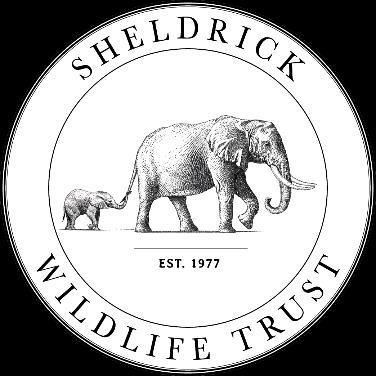

SWT/KWS MARA MOBILE VETERINARY UNIT
JUNE 2025
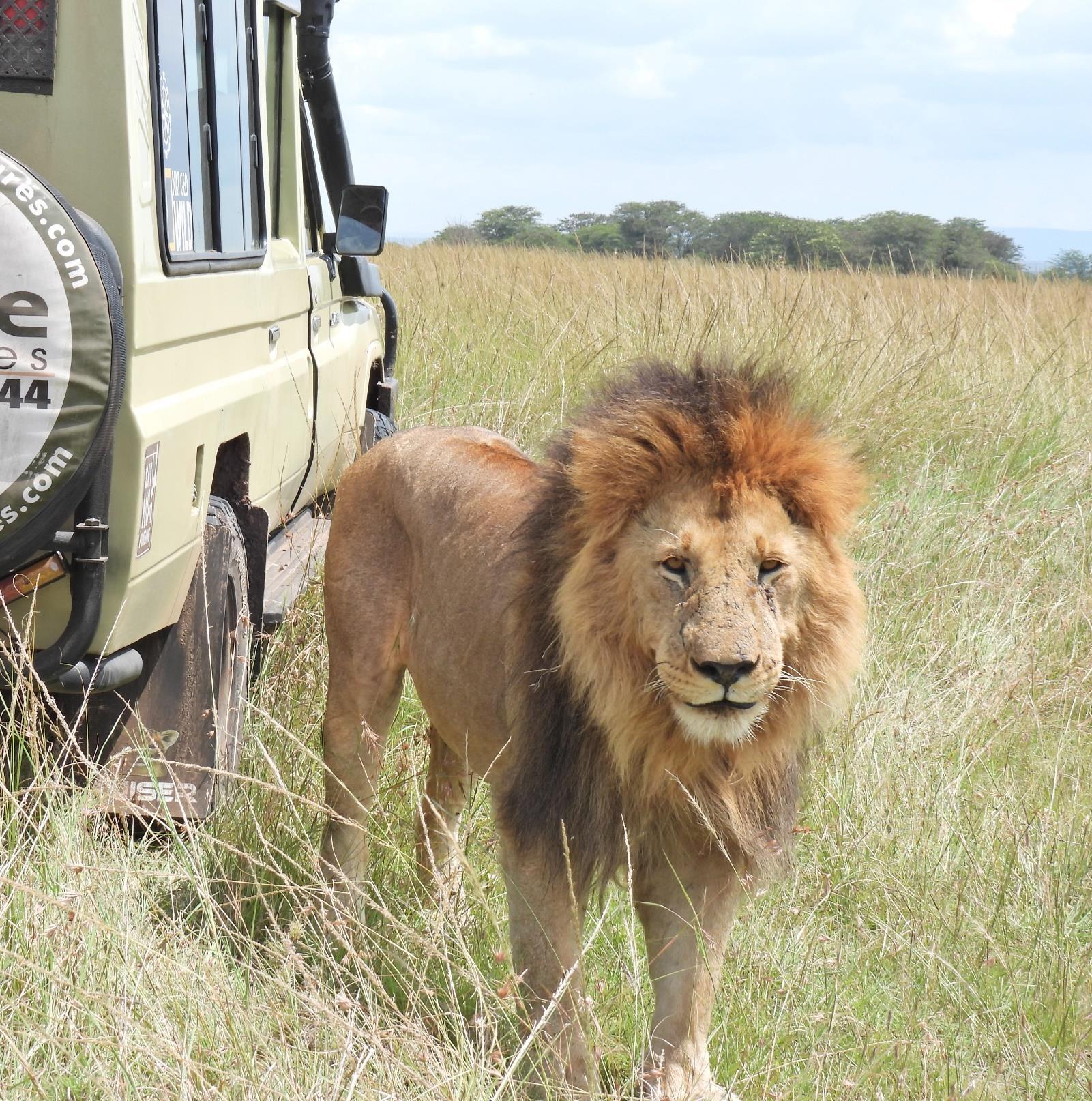


9 Cases in June 2025
June Report by Dr. Michael Njoroge

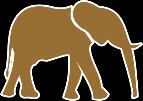
3 Poaching Cases 4 Elephant Cases
The vet Unit attended to 9 cases in June 2025, involving 4 elephants, 2 lions, 1 cheetah, 1 giraffe and 1 White rhino. Two elephants were treated for spear and arrow wounds as well as one giraffe with a spear wound. The Unit also rescued one elephant calf and conducted two postmortems, one on an elephant and another on a White rhino calf. Another postmortem was conducted on a lion whilst one lion was treated for fight wounds. The cheetah was treated for injuries relating to hunting.
Acknowledgement
The Mara Mobile Veterinary Team greatly appreciates Elizabeth Scarlett for funding the Unit through the Sheldrick Wildlife Trust. The team also thanks Kenya Wildlife Service for providing technical support and all the conservation partners who contributed to the success of veterinary interventions through timely reporting of veterinary cases and monitoring of treated animals.
Case Details
June 2025



Case 1 – 1st June 2025
White Rhino Post-mortem
The white rhino calf identified as Kora Calf 2024 was reported in good health in the previous monitoring. No prior medical concerns had been noted. The carcass was discovered on 31st May 2025.
Postmortem examination
The rhino was in good body condition, no external injuries observed and both horns were intact. There was bilateral abdominal distension, bloody discharge noted from both nostrils, oral cavity, and ears.
Generalized haemorrhage present in the tracheal lining. There was pulmonary tissue congested with diffuse haemorrhages. The lungs had marked congestion and diffusely dark lobes. The liver was putrefied making examination impossible. The kidneys appeared pulpy and had autolysis. The spleen was dark red and enlarged. There was generalise haemorrhage throughout the gastrointestinal system and evidence of bloating. There was generalized congestion throughout and massive haemorrhage.
Cause of death
The sudden death coupled with widespread haemorrhages, muscle congestion, rapid decomposition (gas gangrene), rigor mortis, and gastrointestinal prolapse is strongly suggestive of a clostridial infection.
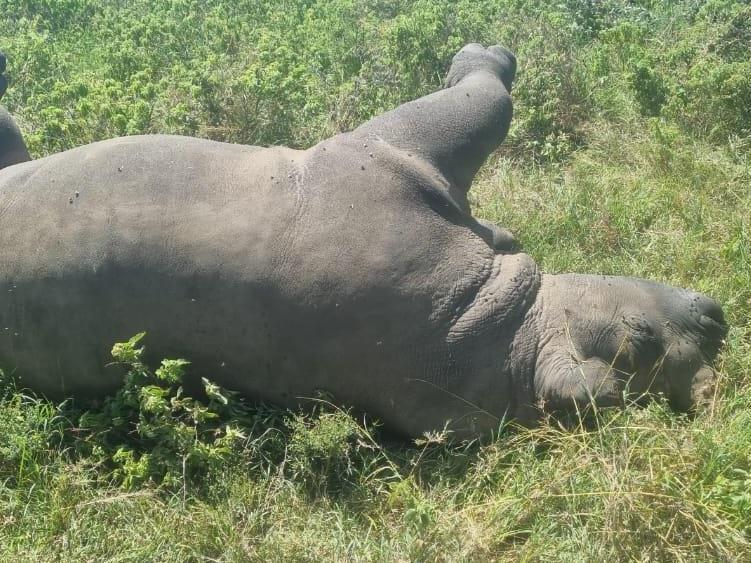
Lake Nakuru National Park
Case
Elephant
Post-mortem
Ilpori Village, Narok County
On June 15, 2025, a dead elephant was reported to the Mara Mobile Vet Unit at Ilpori village, Narok County.
Postmortem examination
After heart auscultation was done, it was confirmed that the elephant was already dead. Lying on the left lateral recumbency. The body condition of the male elephant was good with abdominal distension; the head and the tusks were intact. No external injuries noted.
There was hypostatic congestion by gravity in the body organs, generalized post-mortem emphysema as a result of bacterial fermentation, oozing of blood from the gut, and generalized paint-brush haemorrhage in the external surface of the intestines.
Cause of death
Shock and septicaemia. The adult bull elephant died of natural causes following the necropsy findings. There is no evidence of human involvement in the incident.
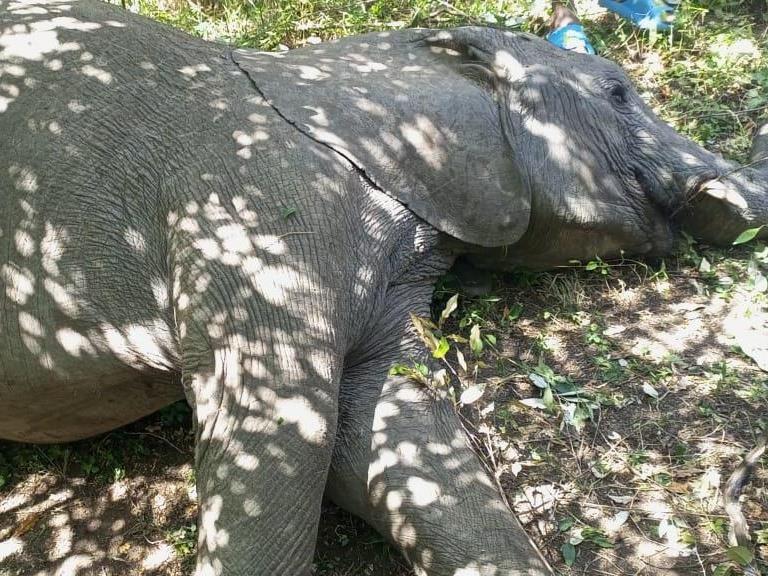
Elephant Rescue
Nyekweri Wildlife Conservancy
Conservancy rangers at Nyekweri received multiple reports of a lone elephant calf found within the area and near the homesteads. The first report of a lone calf within a homestead was led to the discovery of a nearby elephant herd, and a reintroduction attempt was subsequently made; however, the herd rejected the calf. The calf was again observed alone in proximity to a different homestead. A second reintroduction attempt was made, with the same herd again rejecting the calf, strongly suggesting it was not part of the family group. The calf was sighted alone for the third time, confirming that no maternal or family bond had been established. Continued sightings near human dwellings further raised concerns for its safety and well-being as it was in distress, which necessitated a veterinary rescue intervention by the Mara Mobile Vet Unit.
Rescue
The elephant calf was physically restrained by the trained personnel at Nyekweri. The elephant calf was weak, and the body condition was deteriorating, indicating it had no access to milk or adequate nutrition for an estimated 3 to 5 days. Intravenous fluid therapy was instituted immediately post-capture to address the dehydration and metabolic stress. Vital signs were observed continuously during the transport.
The elephant was transported by the Units vehicle and later transferred to a Caravan to SWT Nairobi Nursery.
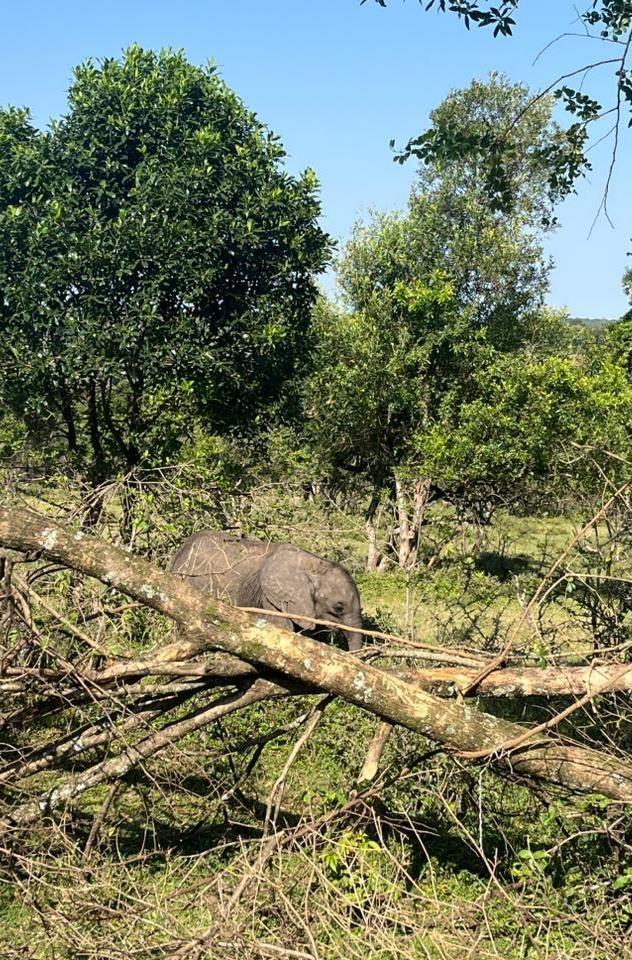

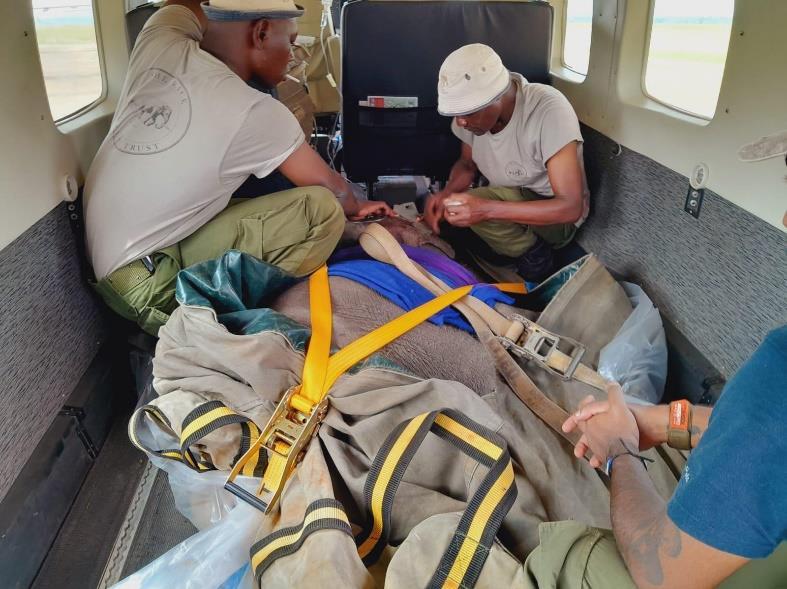
Case 4 – 20th June 2025
Cheetah Natural Causes Masai Mara National Reserve
Oloti, a mature male cheetah, was observed exhibiting signs of lameness and reduced mobility in the right hindlimb following a recent hunting activity. Closer monitoring indicated localized swelling and tenderness around the right femoral joint, raising concerns of potential soft tissue injury or joint trauma.
Immobilization, examination and treatment
The male cheetah was immobilized with the chemical immobilization protocol involving the use of Ketamine hydrochloride 100 mg mixed with Medetomine 1.2 mg intramuscular, administered by a dart gun.
Examination revealed suspected inflammation and early-stage infection of the right femoral joint likely secondary to trauma sustained during hunting. The cheetah was given long-acting broad-spectrum antibiotic: Amoxicillin 880 mgs and anti- inflammatory drug: Flunixin Meglumine 12 mgs intramuscularly.
Reversal and prognosis
After approximately 1 hour, Atipamezole 5.5 mg antidote was administered, and the cheetah was up after 5 minutes of antidote administration. The initial response post-treatment is positive. The prognosis for full recovery is good, contingent on reduced physical exertion during the healing period and continued monitoring for signs of persistent infection of joint damage.
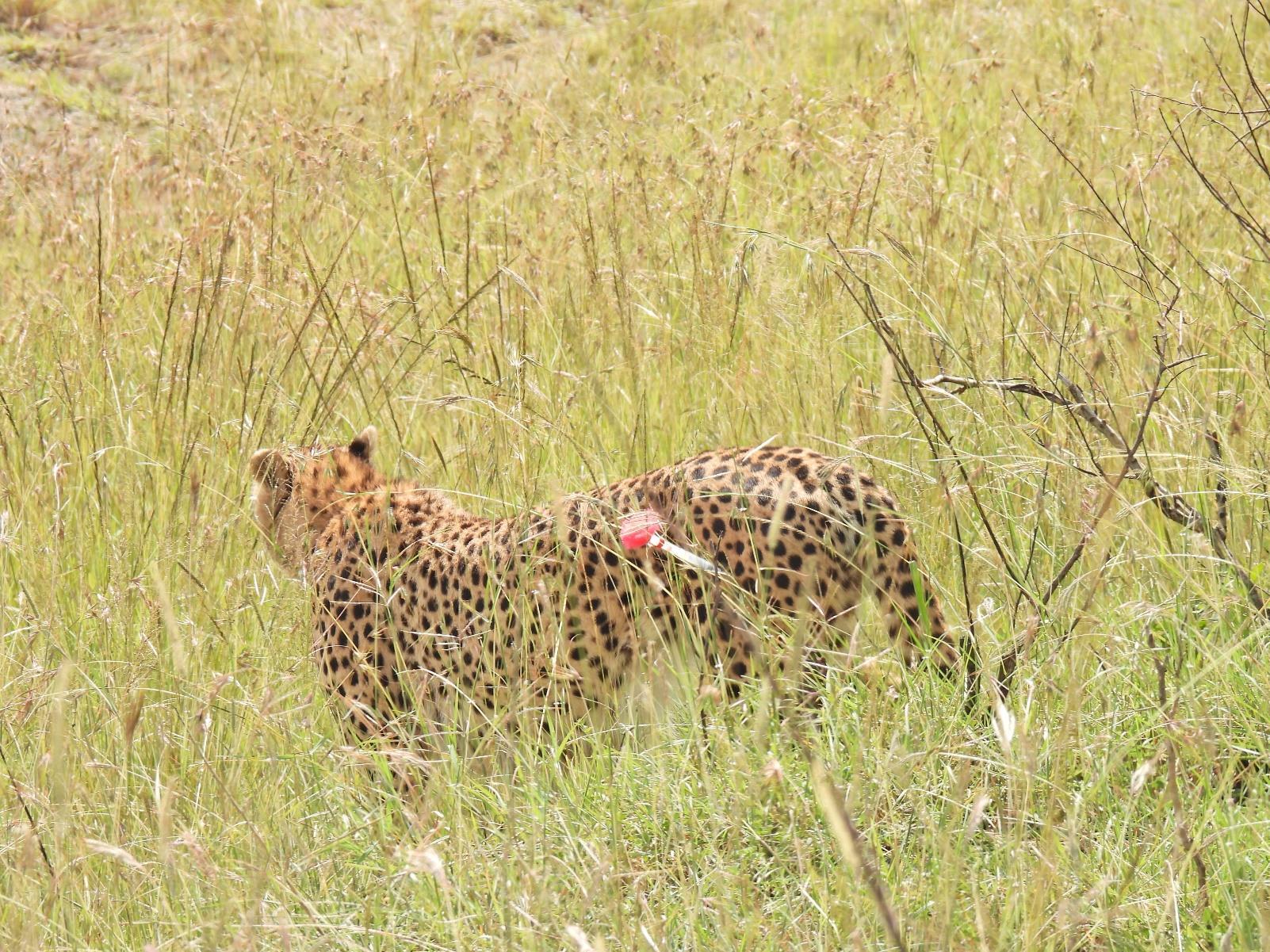
Elephant Spear Pardamat Wildlife Conservancy
The elephant had been previously treated for the open injury on its right forelimb, which had fairly healed, although it still exhibited mild inflammation.


Immobilization, examination and treatment
The elephant was immobilized with 16mg Etorphine and assessed for the extent of its injury. The spear injury was at the right forelimb, causing a swollen elbow joint and, consequently, leading to severe lameness. The massive swelling was much on the caudolateral aspect of the elbow joint.
Examination revealed suppurative arthritis caused by a spear injury The wound was cleaned with Hydrogen peroxide and Iodine. The elephant was also given 1,800 mg Flunixin Meglumine anti-inflammatory and 14,000mg Amoxicillin antibiotic, both intramuscularly.
Reversal and prognosis
The antidote, Naltrexone 320 mgs was administered intravenously, and the elephant was up after a few minutes of administration. Good close but monitoring was recommended.


Lion Natural Causes
Olchoro Conservancy
The lion was reported to Mara Mobile Veterinary to be severely injured following an apparent territorial fight with another male lion within the Olchoro Oirouwa Conservancy.

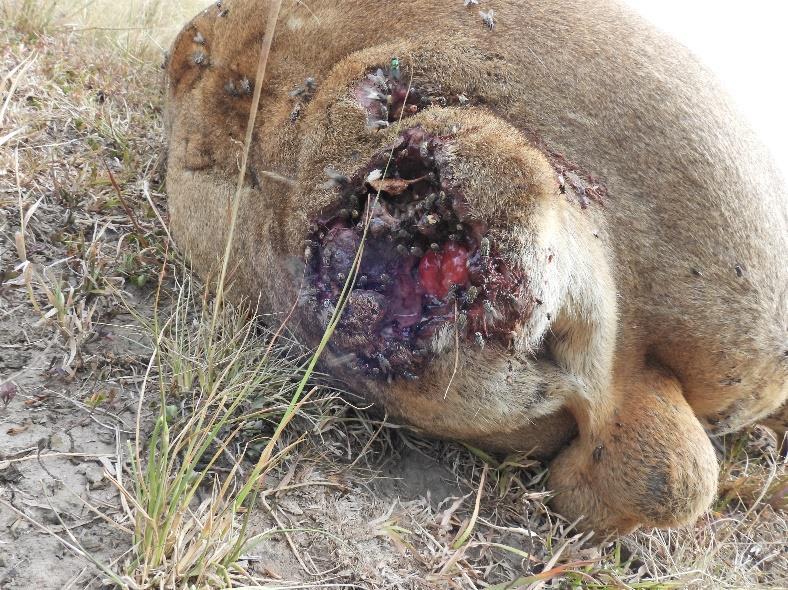
Immobilization, examination and treatment
The lion was immobilized with 300mg Ketamine hydrochloride mixed with 4mg Medetomidine hydrochloride administered via darting from a vehicle at a safe distance. The onset of sedation occurred within 10 minutes, and vital parameters were monitored throughout the intervention procedure. On examination, there was a complete amputation of the tail with necrotic tissue and heavy maggot infestation, lacerations, and deep puncture wounds on the right forelimb, also infested with maggots. Signs of inflammation and early-stage tissue necrosis with mild dehydration, were noted. Wound debridement of necrotic tissues and removal of maggots, irrigation using diluted Iodine and Hydrogen Peroxide and application of topical Oxytetracycline spray were done. Long-acting antibiotic: Amoxicillin 2200 mgs, antiinflammatory: Flunixin 50mgs were administered as well as subcutaneous fluids to address the dehydration.
Reversal and prognosis
The prognosis is fair to good, due to removal of maggots, timely antibiotic administration, and stable vital signs. Though the tail is permanently lost, it does not significantly impact survival.


Case 7 – 21st June 2025
Elephant Arrow
Nyekweri Community Narok West
The rangers reported the injured female elephant to the Mara Vet Unit at the Nyekweri Community Wildlife Conservancy. The elephant had been sighted by the rangers for some days and was reluctant to move for longer distances within the Community Conservancy, and also been left out by her herd.

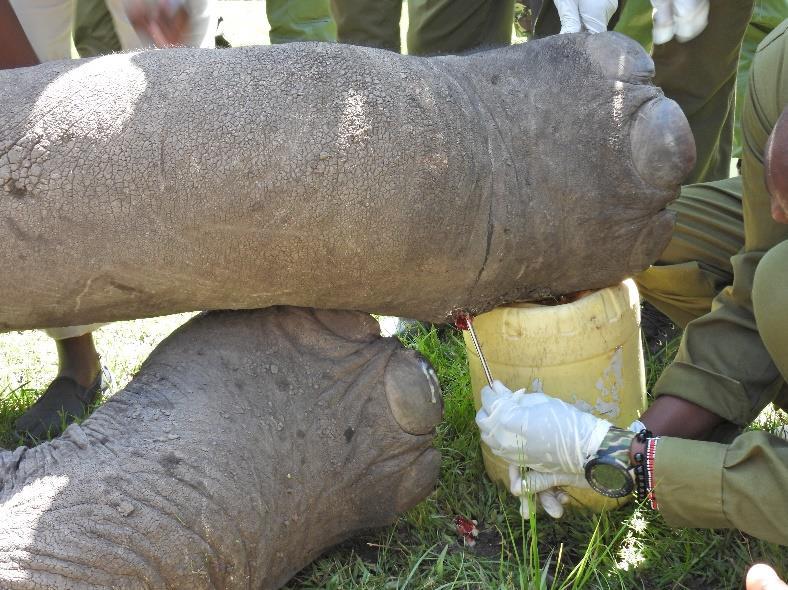
Immobilization, examination and treatment
The elephant was immobilized with 17mgs Etorphine hydrochloride. The elephant took 5 minutes to full sedation. Injury was assessed for the location and extent of injury caused.
The multiple arrow injuries were septic and distributed in the right shoulder, left thigh, and left forelimb and minor injuries at the left flank region. All wounds exhibited signs of localized infection including swelling, purulent discharges and necrosis consistent with septic injury. The necrotic tissues were debrided and the pus was drained then the wounds were thoroughly cleaned with water and Hydrogen peroxide and then flushed with a tincture of Iodine Topical Oxytetracycline spray was applied to the minor wounds on the neck and forelimb Finally Bentonite clay was packed to the wounds to facilitate healing and prevent further infections. The elephant was also given 2,000 mgs Flunixin Meglumine and 18,000 mgs Amoxicillin
Reversal and prognosis
Prognosis is fair to good, but Community and Rangers were encouraged to keep a look out for the elephant.

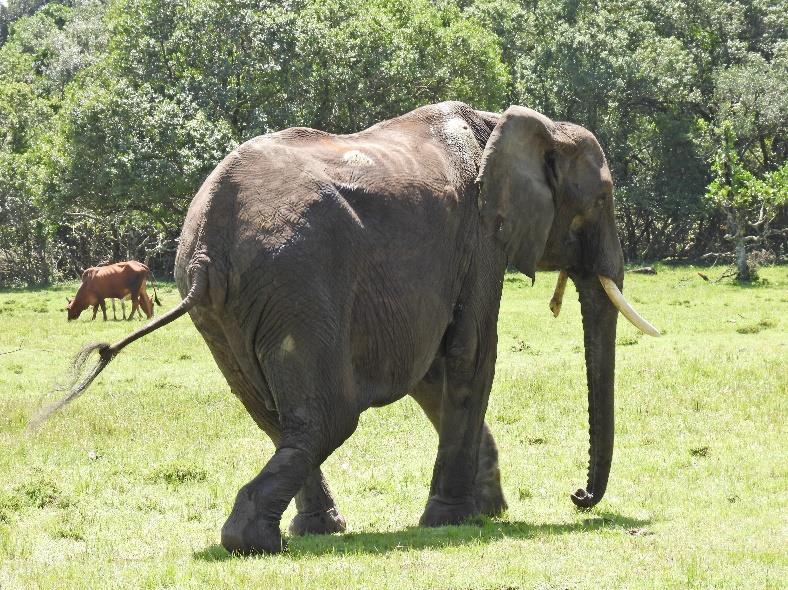
Giraffe Spear Nyekweri Wildlife Conservancy
On June 25, 2025, a report was received of an injured giraffe
Upon locating the animal, visual examination revealed a visible wound on its body, suspected to have been caused by an arrow. The giraffe was observed from a distance using binoculars and camera. The wound was at the carpal joint of the right forelimb, appeared clean, granulating wound with no active bleeding or pus discharge. Indicators of healing, such as scab formation and absence of flies, were noted. The giraffe had normal locomotion, no signs of lameness or discomfort, and was feeding and in good body condition
Recommendation
Based on the above assessment, no immediate veterinary intervention was carried out. Close monitoring continues to ensure the wound continues to heal without complications.

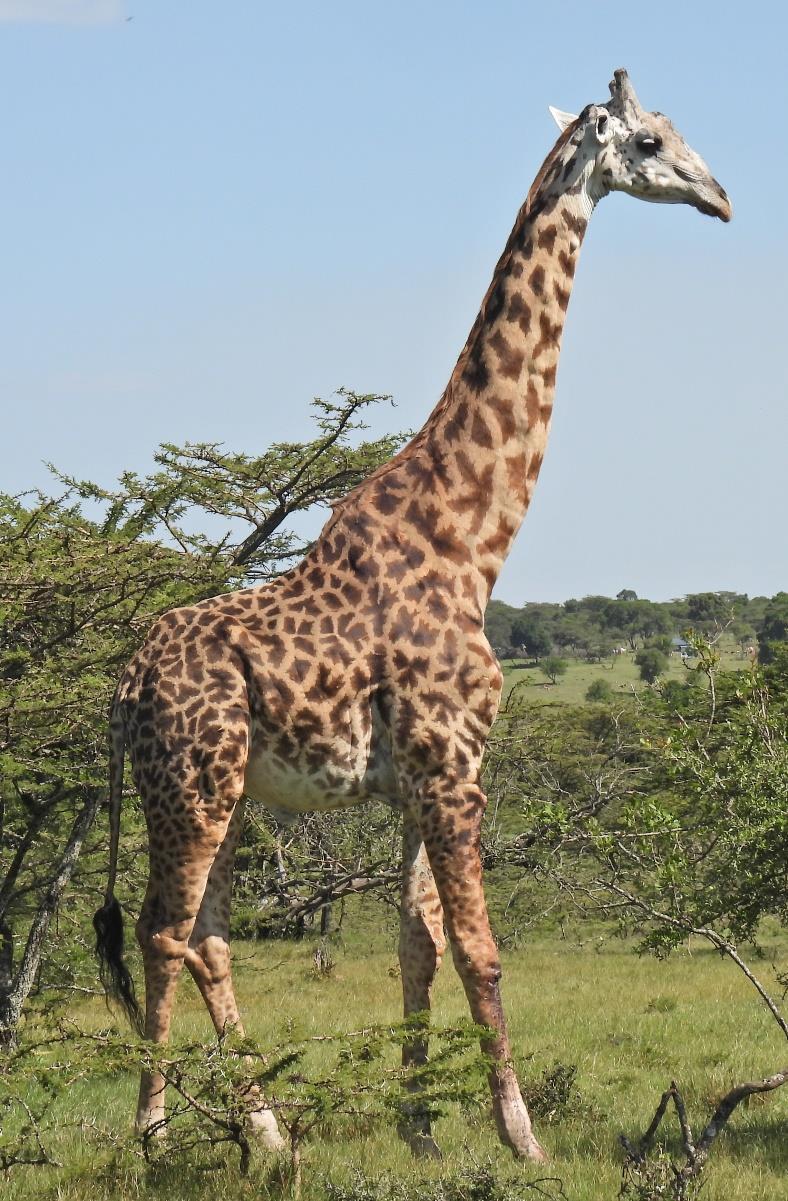
Case 9 – 25th June 2025
Lion
Post-mortem
Olarro Conservancy
The carcass was reported by the conservancy personnel who had been monitoring a coalition of lions involved in recent aggressive interactions. The conservancy reported that the lions had been observed fighting over territorial dominance and had successfully hunted a giraffe approximately five days before the carcass discovery. The specific lion found deceased was believed to have participated in the territorial fight.
Postmortem examination
The carcass was in an advanced stage of decomposition, consistent with the death having occurred approximately 4 days prior to carcass discovery. The decomposition was characterized by:
• Extensive bloating and epidermal sloughing and severe tissue liquefaction
• Presence of maggot infestation and loss of recognizable facial features
• Lacerations and puncture wounds visible bilaterally on the flank region
• Signs of subcutaneous haemorrhage around the rib cage and flanks
• No visible signs of poison ingestion-related lesions
Cause of death
Due to advanced decomposition of the carcass, a standard necropsy could not be performed. Internal organs were largely disintegrated, and definitive examination of the thoracic and abdominal cavities was impossible.

